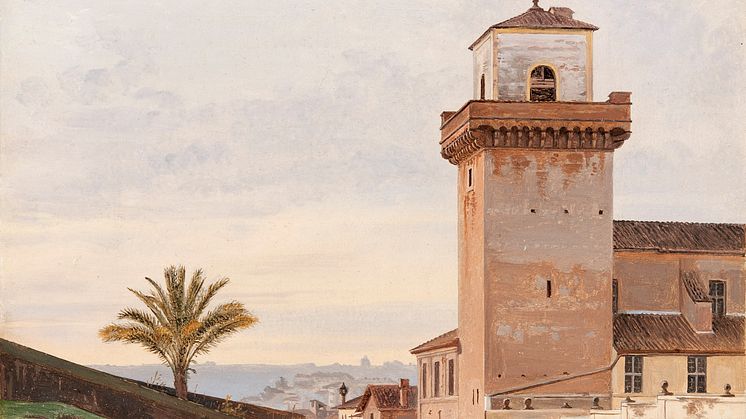
Press release -
A five-year long acquisition project of Danish art at Nationalmuseum has been concluded
When the Danish Golden Age exhibition at Nationalmuseum comes to an end on 21 July and moves on to Copenhagen, a chapter in the history of the museum will also come to an end. It will mark the end of an acquisition project of paintings from the Danish Golden Age that has been going on for the last five years. In all, 90 paintings and the same number of drawings from the period have been acquired and incorporated into the museum's collection, making it the largest outside of Denmark.
For a long time, Nationalmuseum’s collection of Danish art from the first half of the 19th century, a period known as the Danish Golden Age, only consisted of a total of 40 paintings. It has now more than tripled through a number of acquisitions carried out over the past five years and constitutes the largest collection outside of Denmark. Several of the newly acquired works are on display in the exhibition called the Danish Golden Age that can be seen at Nationalmuseum until the 21st of July.
First in the series of acquisitions was Constantin Hansen's exquisite little View of San Pietro in Vincoli in Rome from 1836. The purchase was made in 2014 and was made possible by an outstanding testamentary gift by the late pharmacist, Ulla Bella Sandberg, who donated her entire fortune to Nationalmuseum. Several of the other acquisitions are gifts from the Wiros Fund which has also contributed to enriching the museum's collections. Nationalmuseum receives no state funds for art acquisitions. All acquisitions have been made through gifts or via private foundations and funds. Five years after the first acquisition, Ditlev Bluncks' empathic portrait of a friend painted in Rome in the 1830s was the ninetieth painting to be incorporated into the collection and also the final one into the project. In parallel with this, the collection of drawings has also been enriched with some ninety works by Danish artists, a form of art that is also highlighted in the on-going exhibition.
The entire acquisition project was based on a careful inventory of the works of a number of artists, regardless of whether or not they were perceived as iconic, based on older photographic documentation and literature. The work has gradually resulted in a reassessment of the whole concept of the Danish Golden Age and not least the temporal boundaries of the epoch. In art history,1848 has traditionally been regarded as the end of the golden age, but with the broader interpretation employed by Nationalmseum and SMK, National Gallery of Denmark, in the exhibition at Nationalmuseum, the end of the epoch is set at 1864 instead. The acquisitions have played a key role in the new interpretation of the Danish Golden Age, where forgotten works are placed next to well-known ones. Most artists of the time, both those known and those lesser known, are now represented in Nationalmuseum’s collection.
"It has been an exciting voyage of discovery to explore one of the most vital periods in Danish art and to have been able to build bridges between an existing core and a whole new collection. We all felt pride and joy when we saw how well the newcomers worked together with old treasures from the National Gallery of Denmark that are displayed in the Danish Golden Age exhibition. This was the ultimate proof that we had succeeded," says Magnus Olausson, head of the collections at Nationalmuseum.
The Danish Golden Age exhibition will be on display in Nationalmuseum until 21 July. On 24 August, a version of the exhibition at SMK, National Gallery of Denmark will open in Copenhagen, and in the spring of 2020 it will be on display at the Petit Palais Musée des Beaux-Arts de la Ville de Paris.
For more information
press@nationalmuseum.se, +46 (0)8-5195 4400
Nationalmuseum is Sweden’s museum of art and design. The collections comprise older paintings, sculpture, drawings and graphic art, and applied art and design up to the present day. The museum building has currently been renovated and reopened in autumn 2018. Nationalmuseum has partnerships with Svenska Dagbladet, Bank of America Merrill Lynch, The Wineagency and the Grand Hôtel Stockholm.

